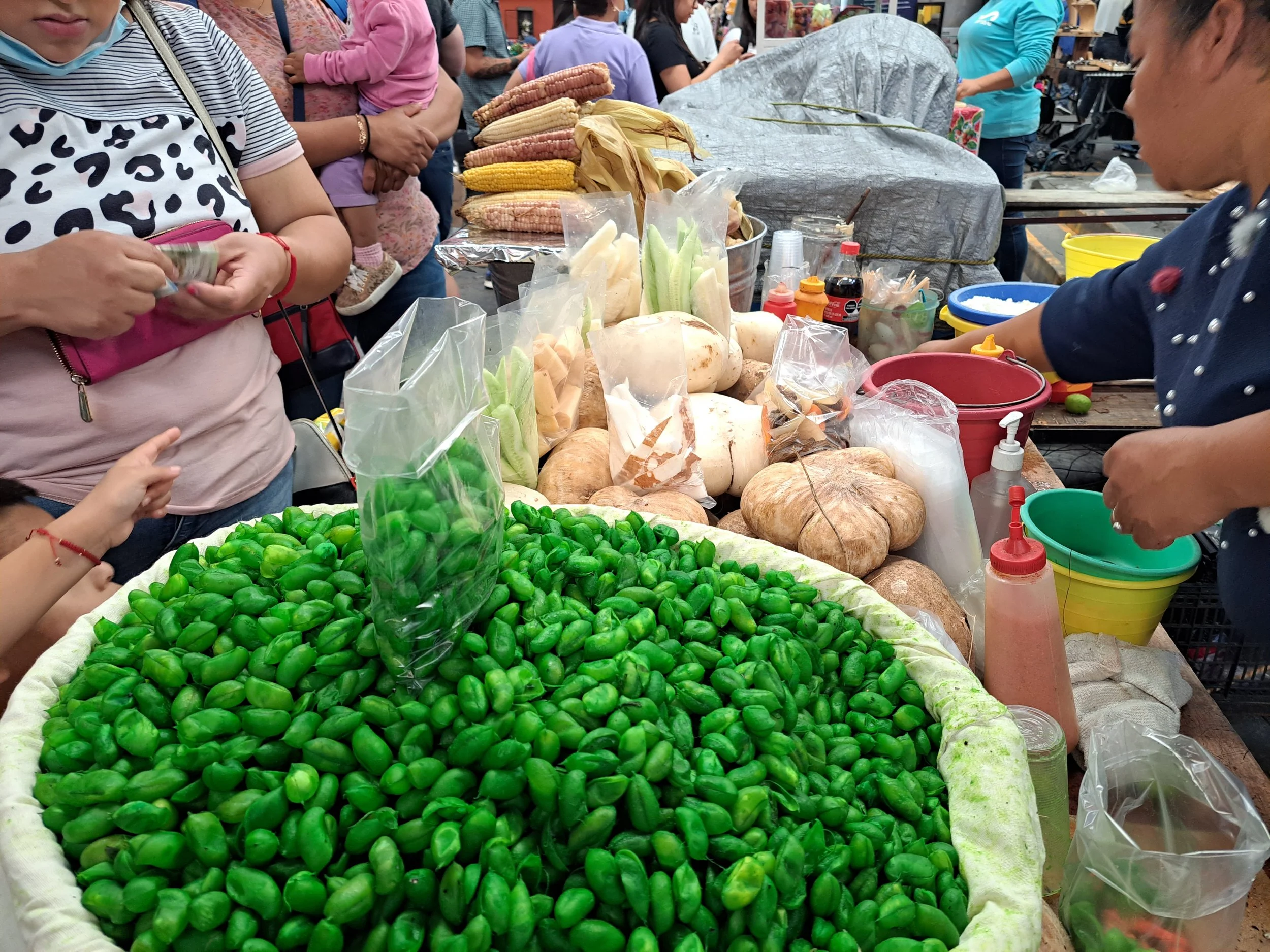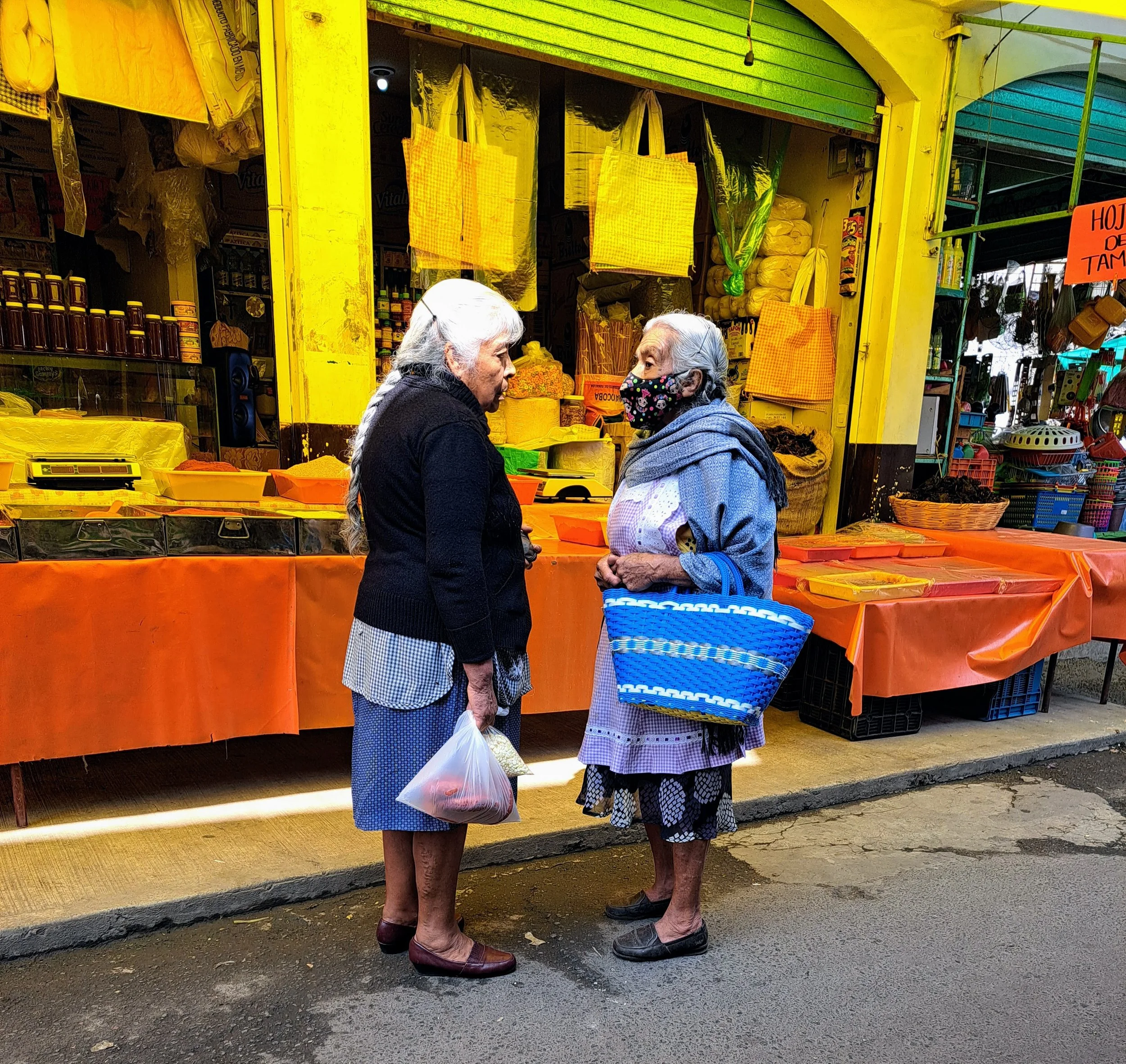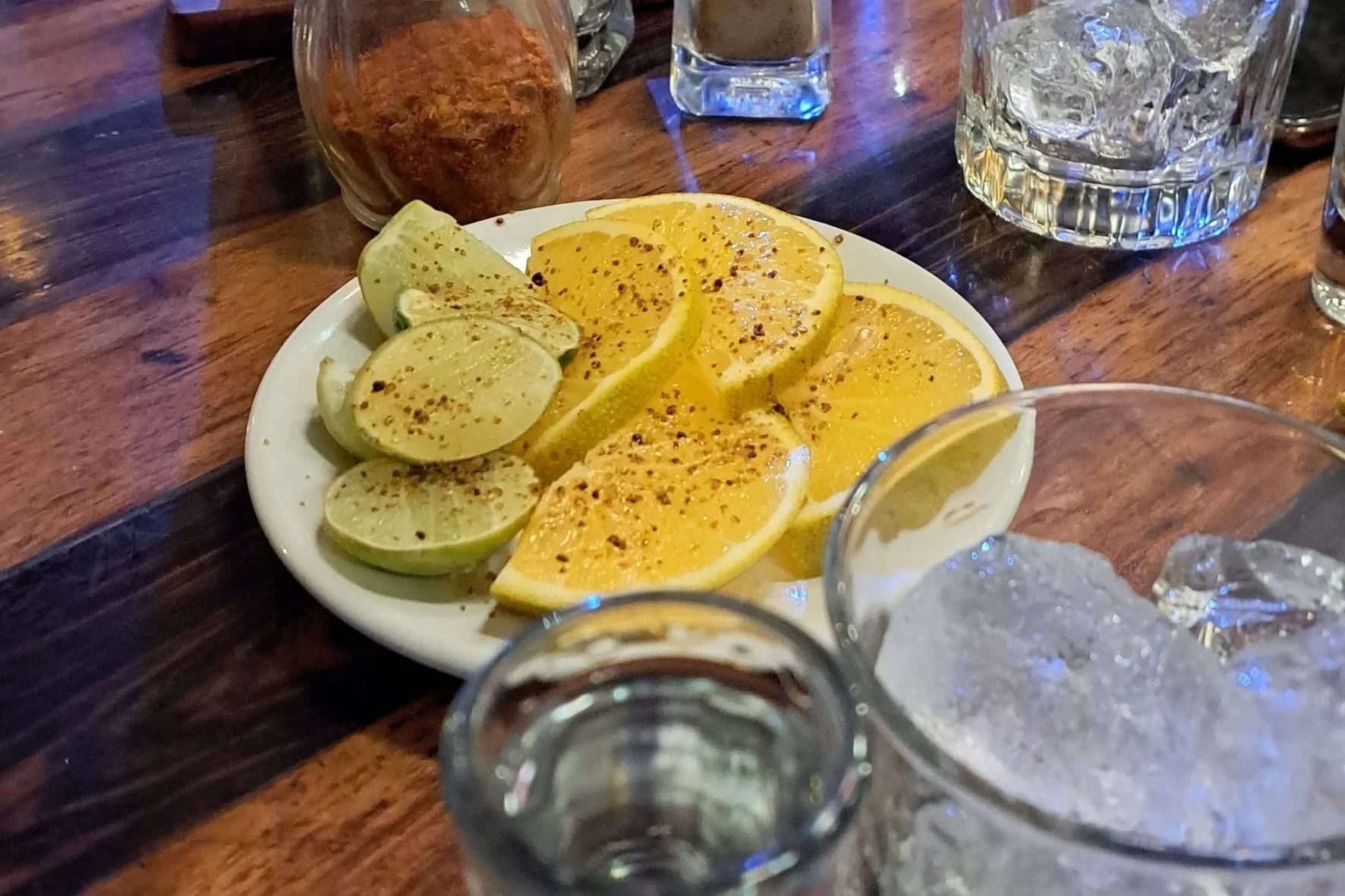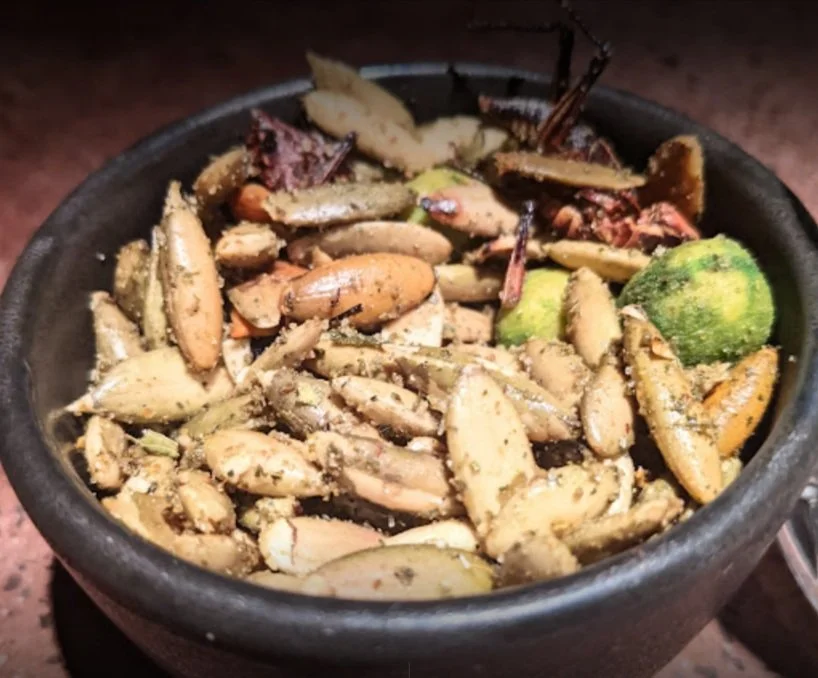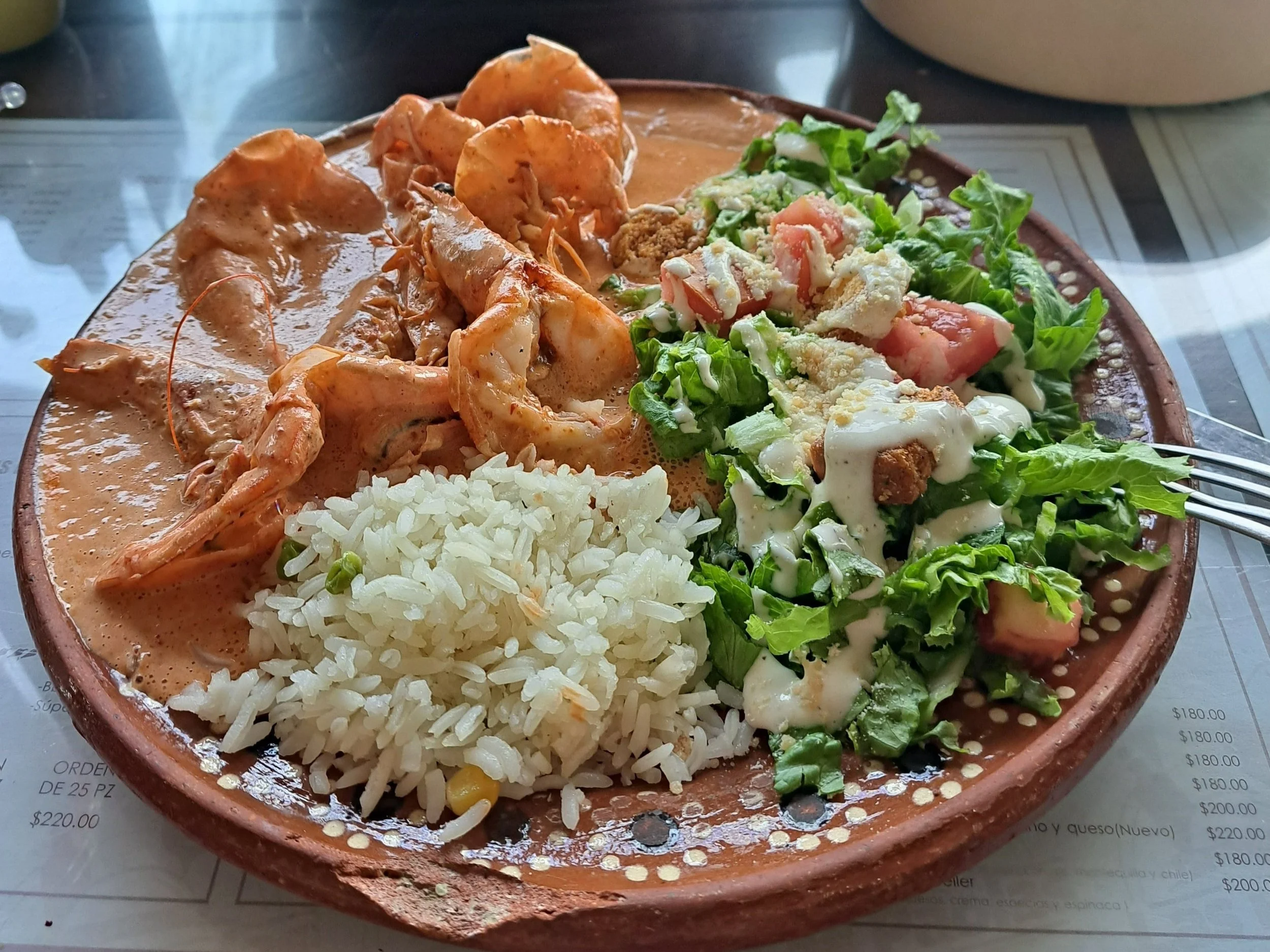My Quest to Find Traditional Food of Mexico
Let it be known that I came to Mexico to eat.
Mexico has so many gifts to offer anyone who visits. Those who venture outside of the resort bubbles will find a beautiful and varied landscape and a rich and fascinating culture with some of the world’s most delicious foods.
In fact, traditional food in Mexico is so special it’s been listed on the Representative List of the Intangible Cultural Heritage of Humanity by UNESCO. Pretty cool, right?
Mexican cuisine is as warm, lively, and diverse as the culture from which it was born.
The food of a place grows from hundreds and sometimes thousands of years of the history, culture, and landscape of the area, and I have internalized, in every sense of the word, as much of those things as possible during my time here-3 months to date.
I am on a mission to taste as much traditional Mexican food as possible, with one hitch: I’m a vegetarian, or maybe a flexitarian. I don’t eat meat unless I attend a Mexican wedding where it’s served or when I’m on a food tour or when I’m called by divine inspiration to order a turkey burger (ethically raised) at the local organic farm. Other than that, I’m a vegetarian.
For people in the United States who have not been introduced to authentic Mexican food, you might be surprised to learn it’s nothing like what’s available at your local Mexican restaurant. I’m not knockin’ Tex Mex, I’ve gorged on more than my fair share, but, although the two share a common ancestor, they are not in the same nuclear family, so to speak.
The culture of Mexican food began thousands of years before the Spanish invasion in the 16th century. Mexico was home to many different groups over the centuries, each with its own language and customs. In fact, there are 68 national languages in Mexico today, 63 of which are indigenous; an indication of the rich diversity of Mexico’s past and present.
The Mayan and Olmec were the first to domesticate corn and establish the process of turning the corn into masa, the flour used to make tortillas and tamales.
Traditional food in Mexico is based on a foundation of corn, beans, and squash (the three sisters) along with turkey, chia, amaranth, avocados, tomatoes, tomatillos, cacao, vanilla, agave, sweet potato, cactus, and the ubiquitous and beloved chili pepper.
If there was one food that embodied Mexico for me it would be the chile pepper, which was first cultivated in Mexico. When you say the word “chili” you are speaking a word from the Nahuatl language family, still spoken by about 1.7 million people in Central Mexico and the United States today.
Some of the most important foods the Spaniards introduced to the region include domesticated meat (except turkey), dairy, olive oil, and sugar.
That’s right, there were no chicken enchiladas, beef tacos, or even bean and cheese burritos in pre-Columbian Mexico. Sorry, Charlie.
I spent a total of three weeks in Mexico City, in September-October 2022. During my first two weeks, I stayed in the posh area of Polanco, not far from Parque Lincoln-a picturesque, beautifully maintained park.
It even includes a majestic, bronze statue of Abraham Lincoln, its namesake, donated by the USA; one of only 3 made.
Anyway, the area is cram packed with restaurants, cafes, and shops. There are always well-dressed people walking around, eating fancy ice cream, drinking fancy coffee, buying fancy things.
There is a restaurant in Polanco where I spent a little time called La Unica. I discovered it on my first day there after an hour of wandering around looking for the perfect place for my first meal.
I love the ambiance and the bar is beautiful, with large comfy bar chairs where I relished two meals.
The modern-style, Mexican fusion dishes were delicious, but it was the drinks I found the most interesting.
I ordered two-okay, maybe three- mezcal cocktails that were really delightful. They were served with sliced oranges and tamarind-flavored candies. And, as always, sal de gusano on the rim of the glass (more on that in a moment).
The tamarind tree, originally from Africa, is another Spanish import and is a very popular spice in Mexico. It is used to make candies, drinks, and chutneys to flavor meat.
Tamarind pods can even be purchased at the local convenience store as a fast and healthy treat. Tamarind is full of vitamins and antioxidants and has a plethora of medicinal uses (constipation, anyone?). And they’re yummy; they taste like sweet tarts.
Chilaquiles and the Mexican Wedding
I also discovered the popular breakfast and brunch dish called chilaquiles (pronounced CHEELAKELAYS) during my first week in Mexico City. It took me another week to remember how to pronounce it, with many, many corrections by my daughter, Maya.
This dish is comprised of corn tortillas, cut into wedges, fried, and then simmered in either green or red sauce. It can be served with shredded chicken or eggs, plain, or on bread, which is called torta de chilaquiles.
It also usually includes some crumbled queso fresco or crema.
The first one I tried was at a restaurant near Parque Lincoln called Buttery (very popular place). I ordered the torta de chilaquiles and gobbled them up.
I’ve had several since then.
They served them for breakfast at the wedding Maya and I attended in Mexico City…at 4:30 in the morning, with a side of live Mariachi. A Mexican wedding tradition.
I had some for brunch on Christmas Eve at a restaurant in San Miguel de Allende, where I’m currently living, with fried eggs on top. Yum.
Speaking of weddings, there are a couple of other interesting and fun Mexican wedding traditions. First, they last all night long and sometimes more than one day. Second, they always include mountains of snacks to make sure everyone has enough energy to keep the party going.
A couple of funny stories about this particular wedding… the wedding cake went missing and my nineteen-year-old had the nerve to go after the bridal bouquet like she was a star basketball player going for the rebound. I think she may have accidentally knocked someone over in the process.
Xochimilco and Mexican markets
The wedding crescendo was followed by Maya leaving to go back to school in New Mexico. I cried when she left, and then I cried when my friend left. Solo traveling can be lonely sometimes.
I drowned my sorrows in food.
During my three weeks in Mexico City, I took several tours through Airbnb Experiences, which were all great.
The food-related tour I booked included a trip to the Floating Gardens of Xochimilco (pronounced ZOCHEEMILKO) about 45 minutes from Roma Norte in CDMX, a walk-through of the nearby market, and a sampling of the best street food on the block.
For this, I suspended my vegetarian status.
First, our tour guide walked us through the market to our first street food stop-tamales!
This is where we also tried a warm, fermented, masa-based drink often served with tamales called atole or atol de alote.
There are a wide variety of traditional, fermented drinks in Mexico, all of which have a pre-Columbian (pre-Hispanic) history and are an integral part of the culture of food in Mexico.
I recently met a private chef from Mexico City who told me the fermented drinks are one of the most unique and interesting foods Mexico has to offer. I hope to try them all before I leave.
Want to experience true local flavor? Go to the market. The indoor and outdoor markets are treasure troves of food and culture. Sit at the counter of a small diner in an indoor market and order their specialty. You’ll thank me later.
The beautiful green of the fava bean, taken at the central market in San Miguel.
My favorite diner at the local indoor market of San Miguel where I try a different flavor of fruit flavored refresco each time I go, this one is guava. Sometimes they make me vegetarian quesadillas and are always kind enough to offer vegetarian options.
Two women speaking at the Xochimilco market.
The floating gardens or collection of chinampas in Xochimilco currently provide about 20% of Mexico City’s food supply.
Chinampas are a method of agriculture in Mesoamerica, created by the Aztecs, where arable land is built, layer upon layer, over many years, on the lakes in the Valley of Mexico.
All of Mexico City is built on a lake. But that’s another fascinating story for another day.
The canals of the Xochimilco Floating Gardens, outside of Mexico City.
Bar drinks and eating insects in Mexico
Do people eat insects in Mexico? Claro, que si! And now, so do I.
In Mexico, alcoholic drinks and bugs go together kinda like chips and salsa. And as it turns out, there are several edible insects in the world and they are an abundant source of protein and minerals, to boot.
Most people are familiar with the worm in the tequila or mezcal bottle which is typically the maguey larvae, found on agave plants, the main ingredient of tequila and mezcal (the plant, not the bug).
But did you know maguey larvae are also used as seasoning?
Sal de gusano, or worm salt in English, is a seasoning made with sea salt, a mix of chili peppers, and ground maguey larvae. I have experienced it sprinkled on garnishes served with shots of tequila and mezcal and I like it.
It’s a common seasoning in Mexico and is also used for soups and other dishes. In Mexico, Sal de gusano can be found in the spice area in a small bottle along with all the other spices.
When Maya and I were in Tulum for her 18th birthday in September 2021, we celebrated one night with mezcal shots with scorpion chasers. When the waiter first brought them to us, I asked him if he did this to play a trick on the gringos. He assured me it was not a trick.
The day before, my beautiful, sweet daughter told me I took a shot like a wuss, I think because I was sipping it.
So when the scorpion was presented I threw back the shot and tossed the scorpion in my mouth, chewed a couple of times for good measure, and swallowed it. I looked at her as I leaned across the table with a triumphant smile and asked, “Who’s the wuss now?”
Mama: one, Maya: zero.
I ate two scorpions and live to tell the tale. Not that I go out searching for scorpions to crunch on, but it does make for an interesting story. Scorpions are safe to eat (after the venomous tail is removed) and are consumed around the world. The scorpions we ate are actually non-venomous and not dangerous.
I’ve since learned that mezcal is for sipping, not shooting. The flavors are meant to be savored and enjoyed slowly.
So, Mama was doin’ it right.
When Maya and I were exploring Mexico City around the time of the big wedding, we found a small but artsy mezcal bar in the Roma Norte neighborhood called Tlecan Mezcalería. This is where we first encountered and dare I say enjoyed eating chapulines (pronounced CHAPOOLEENES), which is a tasty snack of toasted grasshopper.
And no, chapulines are not vegetarian, in case anyone is wondering.
The ones we had were mixed with nuts, pumpkin seeds, and other regular fair and tossed with a delicious spice; sal de gusano if I had to guess. We ate the entire bowl and asked for more.
And Chapulines are healthy. They are a common, crunchy protein source in Mexico and can often be found as the filling in quesadillas or tacos, or sprinkled on fried eggs. When it comes to chapulines, the sky’s the limit.
I would be remiss not to mention the wonderful wine bar two doors down from the mezcaleria, called Local 1. It is owned by our friends, the bride and groom of the wedding, and is a wonderful place to hang out and enjoy all-natural wines. The bartenders are friendly and the owners are wonderful people!
Gorditas
In Spanish, gordita means “chubby girl”. Gorditas are thick tortillas usually made with corn. They are either stuffed with a filling of cheese and/or meat or the filling is cooked into the tortilla and served with condiments on the side. They can be fried or cooked on a comal (traditional griddle) without oil.
Gorditas are a common and much-loved staple in Mexico. You can find them in restaurants and as street food options. They are hearty and delicious.
Gorditas being made on a comal at the local organic market in San Miguel de Allende.
Pozole
When I asked a Mexican friend of mine recently what his favorite Mexican food was, he immediately said “pozole.”
I get the idea that pozole is a comfort food among Mexican people and one they have been eating for hundreds of years, a tradition handed down from the Aztecs. It’s an everyday dish and is also served on holidays and special occasions.
Pozole is a soup or stew of hominy cooked in a green or red broth. Pork and chicken are usually added, but if you’re a vegetarian like me, you can enjoy it sin carne-without meat.
An order of pozole, like all Mexican dishes, comes with a large assortment of condiments.
When I asked which condiments went best with my pozole, my waiter recommended chopped onions, radishes, cilantro, shredded lettuce, and limes, of course. I also had mine with a side of guacamole.
Lime wedges are served with literally everything in Mexico. I can’t count the number of times a Mexican has said to me, “That is so good with a little lime and salt!” in regards to whatever food we were discussing.
I enjoyed my pozole at a restaurant in San Miguel de Allende recommended to me by a local, known for its delicious comfort food and affordability-La Alborada. Just be sure to take your cash because that’s the only way to pay, and watch out for those little solo effectivo signs because sometimes you don’t see them until it’s too late. Take my word for it.
I ate there a few days ago and I still need to return to pay my bill. (Update: bill has been paid!)
This is all really just the tip of the tortilla chip when it comes to authentic Mexican food and what I’ve experienced since I’ve been here.
In addition to the food I’ve discussed here, I also found incredible food, people, and culture during my week in the state of Oaxaca, I learned how to make homemade tamales in a San Miguel cooking class (it took 5 hours!), and I’ve enjoyed many other delicious meals like chipotle shrimp, vegan bean stew, and tacos de nopal; nopal being another Nahuatl word referring to the pads of the prickly pear cactus.
Chipotle shrimp. I actually asked them to remake this because I didn’t want any shells, eyeballs, legs or antennae to deal with. As I explained to my friend, I’m a vegetarian and really want my meat to look look like vegetables.
Vegan stew with an assortment of sauces, limes, and the tortilla basket in the background.
Making tamales at the cooking class in San Miguel de Allende! Here I am scraping the insides of the cooked ancho peppers to make the sauce.
If you are a vegetarian and wondering if you can eat in Mexico, the answer is, absolutely yes. Vegetarian tamales, tacos, and many other foods abound.
There are a surprising number of vegan and vegetarian restaurants in the larger cities of Mexico and they are amazing. I have also found that most restaurants are willing to work with you to come up with something you’ll enjoy as a vegetarian. (In Mexico, I am often offered chicken as a vegetarian option which I find really amusing, lol).
The next time you visit Mexico, get off the resort and wander around. Ask the local people where to find the best traditional food in the area and then be prepared to put hundreds of years of Mexican history and flavor in your mouth.
¡Provecho!
PS-I offer you a poem by by José Olivarez. I hope you enjoy it as much as I do.
there’s two ways to be a Mexican writer
that we’ve discovered so far.
you can be the Mexican writer who writes about tortillas
or you can be the Mexican writer who writes about croissants
instead of the tortillas on their plate.
(can you be a Mexican writer if you’re allergic to corn?)
there’s two ways to be a Mexican writer that are true
& tested. you can write about migration
or you can write about migration.
(can you be a Mexican writer if you never migrated?
if your family never migrated?)
there’s two ways to be a Mexican writer. you can translate
from Spanish. or you can translate to Spanish.
or you can refuse to translate altogether.
there’s only one wound in the Mexican writer’s imagination
& it’s the wound of the chancla. it’s the wound of birria
being sold out at the taco truck. it’s the wound
of too many dolores and not enough dollars. it can be argued
that these are all chanclazos. even death is a chanclazo.
there’s only one miracle gifted to Mexicans
& it is the miracle of never running out of cheap beer.
it’s the miracle of never running out of bad jokes.
there’s infinite ways to eat a tortilla:
made in the ancient ways by hand
& warmed on a comal. made with corn
or with Taco Bell plastic. (what about flour tortillas?)
flour tortillas count if you ask San Antonio.
my people i am poly with the tortillas.
you can eat tortillas with your hands or roll them up
& dip them in caldo like my mom does.
you can eat them with a fork and knife
like my bougie cousins do. (what bougie cousins?)
(i made them up for the purpose of this poem.)
you can eat tortillas in tacos or warmed up
by microwave and drizzled with butter. tortillas
con arroz. tortillas con frijoles. tortillas flipped by hand
or tortillas flipped with a spatula. tortillas with eggs for breakfast.
tortillas fried and sprinkled with sugar for dessert. hard-shell
tortillas. gluten-free tortillas for our mixed family. we are still
discovering new ways to fold a tortilla. to cut a tortilla up.
to transform a tortilla into new worlds. to feed each other
with tortillas. my people: if i have children, i will teach them
about tortillas, but i’m sure they’ll want McDonald’s.









